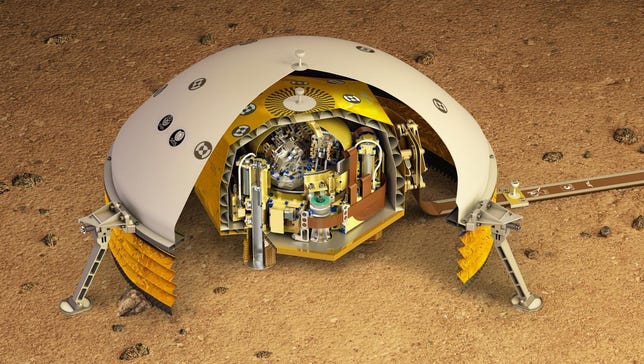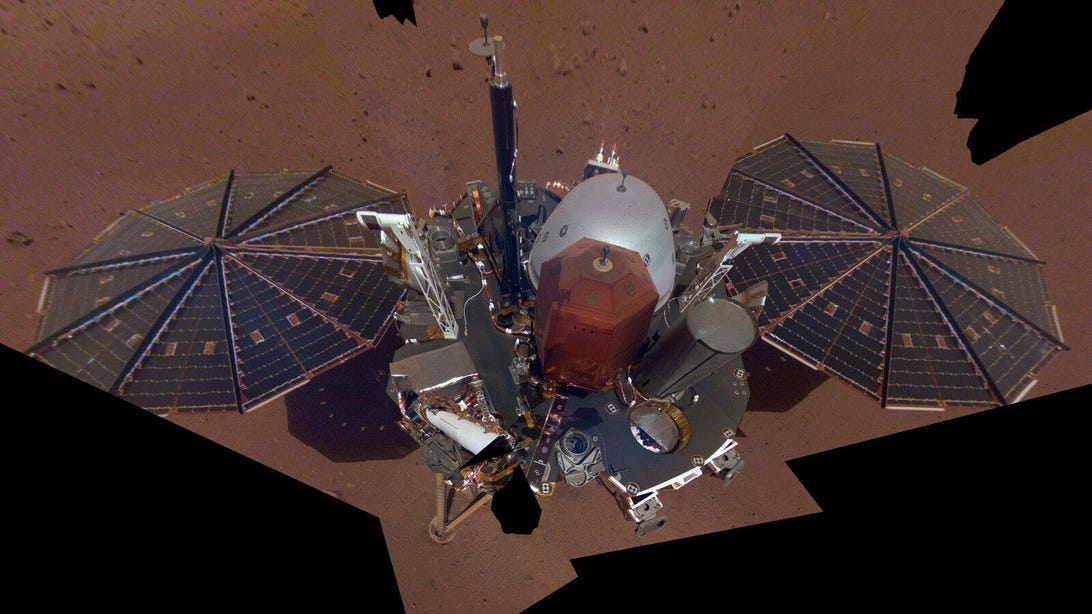Scientists are debating bizarre theory that EVERYTHING in the universe has consciousness including inanimate objects like rocks and chairs as proponents argue the human conscious exists outside the brain
- There are two prevalent theories for consciousness – monism and dualism
- In monism, consciousness is believed to have emerged from the physical brain
- Dualists believe consciousness is separate from matter or the human body
- Most scientists believe consciousness is tied to a person's body – and have tried to find ways quantify and record consciousness
- Panpsychism is a tricky but convenient third theory about consciousness, describing it as inherent in all matter – and that it did not emerge from the brain
- Rather than being borne by the human brain or completely separate from it, consciousness simply exists in all things somewhat merging the disciplines
- The theory of panpsychism first started emerging as early as around the year 600 BCE, though has largely been laughed off by the scientific community
- The theory has come to the fore again after a recent study on the 'sociality' of mitochondria
- The study concluded that mitochondria – which is found in the cells of plants and animals – engage in 'social' behaviors
- The study represents a 'theoretical shift' in how mitochondria are understood to facilitate future discoveries across scientific disciplines
Scientists are debating a bizarre philosophical theory that everything in the universe has consciousness.
There are two prevalent theories for consciousness – monism and dualism. In monism, generally preferred by scientists, consciousness is believed to be entirely a construct of the physical brain.
While religious people and traditionalists tend towards dualism, the belief consciousness is entirely separate from matter or the human body.
Panpsychism is a third theory which describes consciousness as inherent in all matter; both living and inanimate.
Rather than being borne by the human brain or completely separate from it, consciousness exists in all things, even a chair or rock, and some believe that there is one basic consciousness that exists throughout the universe.
The theory has come to the fore again after a recent scientific study on mitochondria. It found that mitochondria – which is found in the cells of plants and animals – engage in 'social' behaviors.
The study, published in the journal Neuroscience and Biobehavioral Reviews in January, appears to suggest that mitochondria are conscious beings – but does not actually say whether the interconnectedness in mitochondria is the result of biological processes or some mystical force.


Panpsychism has entered the foreground recently in the scientific community after Dr. Martin Picard, left, and Swiss scientist Dr. Carmen Sandi, right, published a study on mitochondria
The study reads that mitochondria 'communicate with each other and with the cell nucleus, exhibit group formation and interdependence, synchronize their behaviors, and functionally specialize to accomplish specific functions within the organism.'
Previously, mitochondria have been thought of as the 'powerhouse of the cell,' more like a battery. The study, which does not actually present new findings, represents a 'theoretical shift' in how mitochondria are understood to facilitate future discoveries across scientific disciplines.
An article on Panpsychism, in Salon, called the study 'fascinating scientific trivia' that could be explained by panpsychism but admitted that it was 'empathically' not what the study's two authors had envisioned when conducting their research.
'I do not know enough about panpsychism to make an informed comment,' one of the study authors told the outlet.
In an interview with Salon, David Skrbina - a philosopher and author of the book Panpsychism in the West – said the inability to scientifically explain consciousness has been 'one of the major frustrations' for the scientific community.
'As far as I can tell, and the latest research I've seen, they have been unable to do this, which suggests that consciousness is either a deeper or a more complex phenomenon than most of our scientists have thought and maybe are willing to admit,' he said.
Keith Frankish, an honorary reader in philosophy at the University of Sheffield, wrote in the magazine Aeon that 'panpsychism's popularity stems from the fact that it promises to solve two deep problems simultaneously.'
'The first is the famous 'hard problem' of consciousness. How does the brain produce conscious experience? How can neurons firing give rise to experiences of colour, sound, taste, pain and so on?' he wrote.
'In principle, scientists could map my brain processes in complete detail but, it seems, they could never detect my experiences themselves – the way colours look, pain feels and so on.'
He wrote that the second problem panpsychism promises to solve 'concerns an apparent gap in our scientific picture of the world.'

Scientists are now debating a bizarre philosophical theory that everything in the universe has consciousness including inanimate objects like rocks and chairs
Frankish wrote that, for example, physics can describe the mass, charge and spin of an electron but doesn't answer 'what an electron, or any other basic particle, is like in itself, intrinsically.'
'And, arguably, it never could, since its conceptual resources – mathematical concepts, together with the concepts of causation and spatiotemporal position – are suitable only for describing structures and processes, not intrinsic qualities,' Frankish wrote.
'Yet it is plausible to think that particles can't just be collections of dispositions; they must have some intrinsic categorical properties that give rise to their dispositions.'
However, he argues that panpsychism faces its own problems as panpsychists believe consciousness 'emerges from the combination of billions of subatomic consciousnesses, just as the brain emerges from the organisation of billions of subatomic particles;
'How do the micro-experiences of billions of subatomic particles in my brain combine to form the twinge of pain I'm feeling in my knee?' he wrote.
'If billions of humans organised themselves to form a giant brain, each person simulating a single neuron and sending signals to the others using mobile phones, it seems unlikely that their consciousnesses would merge to form a single giant consciousness. Why should something similar happen with subatomic particles?'
Luke Roelofs, a philosopher of mind at NYU's Centre for Mind, Brain, and Consciousness, told Salon that panpsychists think that mental experiences such as thought, reasoning, decision-making, and the experiencing of senses are not the same thing as consciousness.
'Consciousness is just subjectivity,' he said. 'And so they think it makes sense for consciousness to exist in simple forms without thought, without reasoning, without vision or hearing or smell.'
He said that critics of panpsychism like Frankish think 'there's nothing left to talk about' when you take away thought and reasoning from the definitions of consciousness.
Frankish himself argues as much, writing that consciousness 'appears to be a specific state of certain highly complex information-processing systems, not a basic feature of the Universe.'
He argues that panpsychism gives consciousness a 'curious status' by placing it 'at the very heart of every physical entity' but then gives no explanation for its role.
'It finds a place for consciousness in the physical world, but that place is a sort of limbo. Consciousness is indeed a hard nut to crack, but I think we should exhaust the other options before we take a metaphysical sledgehammer to it,' Frankish wrote.
He alternatively concludes anew theory, that consciousness is an 'illusion' and that it 'is not everywhere but nowhere.'
'Perhaps this seems as strange a view as panpsychism,' he wrote. 'But thinking about consciousness can lead one to embrace strange views.'
Among the first examples of the panpsychist theory came from the philosopher Thales who noted that some objects like magnets and amber must possess minds because they can move themselves, according to the entry on panpsychism in the Stanford Encyclopedia of Philosophy.
The theory of panpsychism first started emerging as early as around the year 600 BCE, though has largely been laughed off by the scientific community.
The Stanford Encyclopedia of Philosophy notes that early Greek philosophers were hit with the same dilemma about panpsychists being debated today.
'If one opts for reductionism [a monistic view that the mind can be reduced to fundamental elements] it is incumbent upon one to explain how the reduction happens,' the encyclopedia entry reads.
'On the other hand, if one opts for the panpsychist view that mind is an elemental feature of the world, then one must account for the apparent lack of mental features at the fundamental level.'
Nearly two millennia later, scientists like Sir Isaac Newton and Galileo Galilei worked to mathematize and quantify nature and the sciences by removing experiences and qualifiers.
Meanwhile, philosopher Rene Descartes, who lived during the 17th century Enlightenment, took the dualist arguing that physical bodies served as a house for the mind and souls - which were separate entities.
Philip Goff, associate professor of philosophy at Durham University, told Salon that 'what Descartes was making very rigorous was the philosophy of Galileo.'
Goff explained that Galileo argued consciousness had to be removed from the scientific process and explained in other academic disciplines because it could not be described mathematically.
'Consciousness involves quality — the redness of a red experience, the smell of coffee, the taste of min. These qualities that can't be captured in a purely quantitative vocabulary of mathematics,' said Goff, one of the leading scholars on panpsychism.
'So Galileo said that if we want mathematical science, we need to take consciousness out of the domain of science.'















 By
By